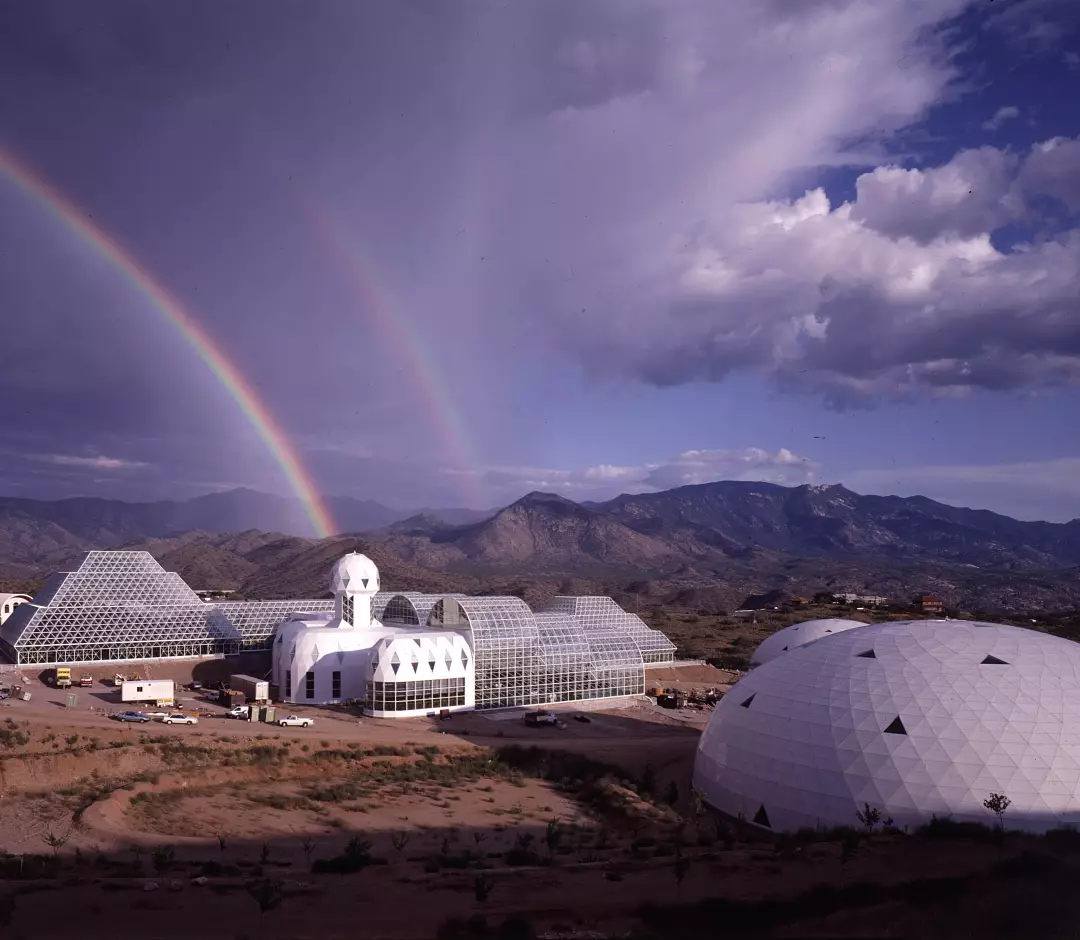 hat would happen if humans were cut off from natural living conditions, such as moving to Mars? Could humans survive for two years in a closed, airtight, self-sustaining ecosystem with 3,800 species of plants and animals? These questions preoccupied scientists in the second half of the 20th century when the nuclear crisis in Cuba and the space race confronted everyone with the fragility of the human ecosystem.
hat would happen if humans were cut off from natural living conditions, such as moving to Mars? Could humans survive for two years in a closed, airtight, self-sustaining ecosystem with 3,800 species of plants and animals? These questions preoccupied scientists in the second half of the 20th century when the nuclear crisis in Cuba and the space race confronted everyone with the fragility of the human ecosystem.
Closed greenhouse ecosystems were seen as crucial to the survival of human civilization and so have long been developed and tested, but not every investment has paid off and some of them have been major failures. Sure enough, some were so eccentric and expensive that they are still being discussed today, while many of them have not yet been abandoned altogether.
In the early 1990s, a failed environmental experiment involving a replica of Earth’s ecosystem, called Biosphere 2, took place in Arizona and was supported by scientists, engineers, and businessmen who wanted to solve the problems of survival outside Earth’s normal conditions.
This privately funded, $200 million scientific experiment stirred the nation’s emotions at the time and made headlines around the world, only to be forgotten today. The name of the project, Biosphere 2, was chosen in reference to the planet Earth, which is called Biosphere 1.
SF Noah’s Ark
The construction of the largest self-sustaining ecosystem on earth took seven years and covered an area of almost three acres or 1.2 hectares. It had a desert, savannah grassland, mangrove forest, and an 836-square-meter ocean with its own coral reef. One of the reasons for the size of the project was to develop a bio-regenerative technology for future space travel.

Biosphere 2 included several tropical and subtropical ecosystems, an agricultural area, wetlands for sewage treatment, and a human habitat, but also a factory-sized machine area to maintain Physico-chemical conditions. It was literally a futuristic Noah’s Ark, designed to show whether survival under artificial conditions was possible in case of an apocalypse or if humans decided to colonize another planet.
The idea was that the inhabitants, the “biosphereians”, could grow their own food and drink while maintaining viable levels of carbon dioxide and oxygen. The biggest challenge was man-made pollution and how to protect the ecosystem. Therefore, only natural materials such as wool, wood, and stone were used.
However, after a two-year experiment with eight scientists living inside, the project was discontinued in 1993, only to be resumed in 1994 and terminated again after only six months.
A Two-Year Lockdown
On September 26, 1991, eight scientists locked themselves in an airtight, three-acre greenhouse forty miles north of Tucson, Arizona, to prove they could survive in an artificial ecosystem. Among them were a doctor, a botanist, and a marine biologist. A sign above Biosphere 2 read: “During any closure of Biosphere 2, no air, water, materials – or people – will enter or leave the Biosphere.”
Fortunately, this experimental self-sustaining colony was not yet on another planet, because the problems soon began. The carbon dioxide level increased too much due to the high respiration rate of the soil, while the oxygen level became dangerously low because the plants couldn’t use all the carbon dioxide and therefore all the oxygen produced was converted to CO2 and absorbed by the leaky concrete used to build the habitat.
As the animals and plants began to die, the group split into two warring factions, making life even more difficult. To sustain life, oxygen had to be pumped into Biosphere 2. A carbon dioxide scrubber also had to be installed, like those used in submarines, which contained many chemicals, prompting the media to refer to the facility as a submarine with plants.
But despite all the problems, all eight inhabitants remained until the end of a two-year period in which they lived completely cut off from the external, earthly world. However, the following human experiment in 1994 was stopped after only six months because harmful concentrations of nitrous oxide had formed in the atmosphere due to microbial metabolism.
A doomsday cult obsessed with relocation to Mars
As the problems with species extinction, sustainability, and the use of non-clean and non-renewable resources became known, pressure from the scientific community and the public grew to cancel the project, and Biosphere was discredited as a scientific hoax, while the research team was labeled as a doomsday cult obsessed with relocation to Mars.
The reason for this was that the inventor and director of the project was the charismatic John Allen, who ran a countercultural theatre commune called Synergetic Civilization on a ranch near Santa Fe in New Mexico in the 1970s. This commune also included the architect Phil Hawes and the oil magnate Edward P. Bass, who were interested in environmental solutions and space technology.
Hawes was the principal architect of the University of Arizona’s Environmental Research Laboratory project, a building that would integrate energy, water, and food into an ecosystem. In the 1970s he had a project in New Mexico that applied the principles of the space ecosystem to the energy and material circulation in a building.
Bass believed that space technology would be crucial to solving the world’s environmental and social problems in the future. He wanted to develop ecological technologies that would benefit energy efficiency, recycling, waste processing, wastewater disposal, microbial composting, and other new solutions to Earth’s environmental problems.
From tourist attraction to a research center for climate change
When building Biosphere 2, Allen, Bass, and Hawes wanted to explore two solutions for the future of humanity. One was to prove that ecological colonization of space was a feasible idea. The other was to build a shelter where they could survive and save some species of animals and plants if the environmental crisis made Earth uninhabitable.
But although the experiment lasted two years as planned, it was clear from the start that technology was not ready to support the scale of the project, which then became more of a social experiment before Big Brother and Survivor. Nevertheless, the Biosphere 2 building became a model for ecological architecture and set the standard for self-sufficient AI cities today.
However, back in 1994, after the second failed lockdown experiment, which was abandoned again because of problems with the artificial atmosphere, Bass and his partners dismissed most of the staff and for a time, this grand, innovative, and ecological structure served as an ecotourism retreat where visitors could rent a room inside the building and walk through the area to experience what life might feel like on Mars or in a modern Noah’s Ark.
From 1996 to 2003, Columbia University took over Biosphere 2 and began climate experiments. Soon, more and more scientists from different disciplines came to Arizona to deepen their understanding of natural phenomena. For instance, in the half-hectare rainforest, scientists are researching how tropical ecosystems could survive the heat and drought of the late 21st century. So although the human experiments in Biosphere 2 failed twice, they enabled climate and environmental research while serving as a prototype for self-sufficient architecture.
Today, Biosphere 2 is the leading center for climate and environmental research, making a big difference with its discoveries – thanks to eight inspired scientists who were brave enough to lock themselves away and explore the possibilities of living in a self-sufficient greenhouse in the Arizona desert.

Writer and director who thinks different and does everything differently. Art enthusiast. Wandering and wondering. Until the end of meaning.
irena_curik@hotmail.com





